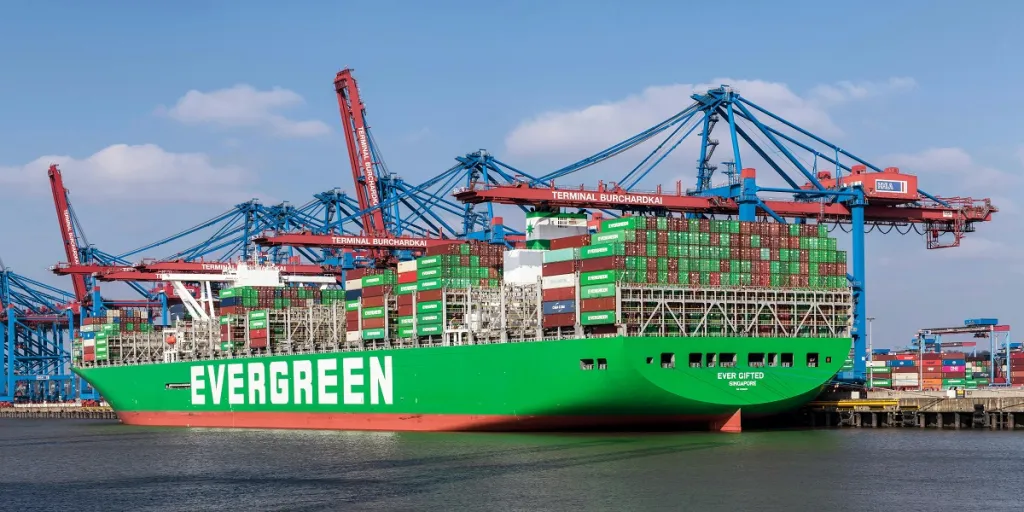Logistics and supply chains are about more than just moving products from point A to point B. Businesses must consider various factors, such as inventory shortages, delivery delays, and other potential risks. How can they anticipate and effectively mitigate these issues?
The consequences of not addressing these challenges can be severe. Supply chain disruptions may potentially reduce industrial production by 4% to 5% in the next year or two, significantly impacting businesses’ bottom lines and overall market stability.
Fear not! This blog post will guide businesses through the essentials of logistics risk management, including its definition, importance, and the development of an effective strategy to address all types of risks. So, let’s dive in and get started!
Table of Contents
What is logistics risk management?
What are some common types of logistics risks?
How to develop a logistics risk management strategy
The future of logistics risk management
What is logistics risk management?
When we talk about logistics risk management, we’re referring to the essential process of identifying, assessing, and prioritizing the various supply chain risks. After identifying these risks, the next step is to come up with a solid risk management strategy to tackle them head-on. This well-rounded approach is a lifesaver for businesses, as it shields their logistics processes from any unforeseen hiccups or disruptions in the global supply chains.
For logistics risk management to be effective, it needs to be rooted in thorough logistics planning and open real-time communication between everyone involved in the global supply chain. By truly grasping and addressing the possible risks, businesses can build more robust and streamlined supply chains that are ready to face challenges and minimize any negative effects on their day-to-day operations.
What are some common types of logistics risks?
Navigating the world of business today means facing the reality of logistics risks. These risks can pop up from a variety of sources, such as supply chain disruptions, transportation bottlenecks, and regulatory or compliance hurdles. Let’s delve into some of the usual logistics risks that might have an impact on global supply chains.

Supply chain disruptions
Supply chain disruptions are those pesky events that can throw a wrench into the smooth flow of goods and services from one part of the supply chain to another. When these disruptions occur, they can lead to delays or other issues in delivering products to customers, which can be a major headache for businesses.
Common types of supply chain disruptions include:
- Natural disasters: Events like floods and earthquakes;
- Infrastructure damage: Instances of road closures due to snowstorms or flooding;
- Labor disputes: Situations such as worker strikes at ports or factories;
- Global pandemics: Outbreaks of infectious diseases causing widespread disruptions;
- Geopolitical issues: Conflicts with a regional or global dimension affecting materials supply or transportation.
Transportation risks
It’s easy to overlook transportation risks, but they’re actually among the most common logistics challenges businesses encounter. Ensuring that goods get from point A to point B is vital for maintaining customer satisfaction, but it’s not always smooth sailing. Whether it’s by road, air, or sea, each mode of transportation comes with its unique hurdles to overcome.
Some of the risks associated with transportation include:
- Damage to goods during transit: Caused by rough handling or inadequate packaging;
- Delays in transit: Due to bad weather, traffic jams, or border disputes between countries;
- Missed delivery deadlines: Harmful to reputation and customer relationships;
- Lack of drivers or vehicles: Struggling to meet deadlines during peak seasons or unexpected events.
Regulatory and compliance risks
Regulatory and compliance risks can be a tricky aspect of logistics, as they can result from actual violations or simply misunderstandings of regulations and policies. These risks are especially prevalent in industries that involve shipping or transporting goods across international borders, where compliance documentation is crucial to ensure smooth operations.

Various forms of regulatory and compliance risks can impact businesses, including:
- Excessive government regulations: These can be difficult to navigate or expensive to meet, putting a strain on resources;
- Poor compliance with existing requirements: Failing to adhere to regulations can lead to delays, penalties and damaged reputations;
- Insufficient internal controls or resources: This can result in non-compliance with regulatory requirements;
- Lack of knowledge about regulations: Being unaware of specific regulations related to a product or process can lead to unintentional violations.
Financial and economic risks
Financial and economic risks are often considered some of the biggest threats to global supply chains. These monetary risks can be difficult to predict, making it challenging for businesses to effectively manage and mitigate their impact on logistics processes.
Various financial and economic risks can impact logistics activities, including:
- Currency fluctuations: Changes in currency values can affect the cost of goods and services, impacting profitability;
- Interest rate changes: Shifts in interest rates can impact financing costs and investment decisions, affecting overall business operations;
- Economic downturns: Recessions or economic slowdowns can lead to decreased demand for goods and services, putting pressure on logistics operations.
Cybersecurity risks
As more and more businesses embrace cloud-based solutions and tap into the power of big data for managing their logistics, it’s become essential to prioritize robust cybersecurity measures. After all, cybersecurity risks can pose a serious challenge to logistics operations. These risks have the potential to compromise the security and integrity of supply chain data and its availability.
Some common cybersecurity threats affecting supply chains include:
- Phishing scams: Deceptive emails or messages designed to trick users into revealing sensitive information or downloading malicious software;
- Data breaches: Unauthorized access to sensitive data, potentially leading to the exposure of confidential information;
- Ransomware attacks: Malware that encrypts data on a victim’s system, demanding a ransom for the decryption key;
- Business Email Compromise (BEC) attacks: Fraudulent emails that appear to come from a legitimate source, often targeting supply chain partners to steal sensitive data or manipulate financial transactions.
How to develop a logistics risk management strategy
In the previous section, we outlined common logistics risks. Now let’s take a look at how to mitigate those risks by developing an effective logistics risk management strategy.
1. Identify potential risks
Creating a successful supply chain risk management strategy starts with spotting potential risks and vulnerabilities that could affect logistics processes. Businesses need to think about a variety of factors that might impact their supply chains, such as natural disasters, political unrest, employee misconduct, and cybersecurity threats. By being aware of these risks, they can address them proactively and forge a more resilient logistics operation.
A great way to uncover potential risks is by using the McKinsey framework, which involves mapping out and evaluating the value chains of all the key products. This approach allows businesses to delve into each node of their supply chain, revealing possible vulnerabilities and areas that need improvement. By gaining a deep understanding of their supply chain’s complexities, companies can make well-informed decisions and craft a solid risk management strategy.
2. Prioritize risks
Now that businesses have identified and understood the potential risks they face, it’s time to focus on prioritizing those risks. By ranking them, they can ensure that their logistics risk management strategy addresses the most pressing challenges first, allowing them to allocate resources efficiently and make the most significant impact.
There are numerous ways to prioritize risks, but one tried-and-true method is the Failure Modes and Effects Analysis (FMEA). This technique systematically evaluates potential failure modes, their causes, and their effects on logistics operations, helping businesses to rank risks based on their severity, occurrence, and detection ratings.
In addition to FMEA, decision tree analysis is another useful tool for assessing risks. This approach visually represents possible outcomes and consequences, enabling businesses to evaluate the probability and impact of different scenarios and make well-informed decisions. By employing these methods, companies can create a solid foundation for their logistics risk management strategy.
3. Develop mitigation plans
With the logistics risks prioritized, businesses should focus on developing effective mitigation plans to address each high-priority risk. Emphasizing prevention rather than waiting for an incident to occur is crucial. By being proactive, businesses can minimize the potential impact of risks on their logistics operations and ensure a smooth risk management process.
Contingency plans need to outline specific actions required by everyone involved in the management of supply chain and logistics, including third parties. Mitigation strategies can vary from simple procedural changes, such as modifying the way businesses receive their shipments, to more complex adjustments, like switching suppliers. Having a well-defined plan in place allows companies to rapidly adapt to disruptions and maintain seamless supply chain operations, even when faced with unforeseen challenges.
4. Monitor and manage logistics risks
Once businesses have developed their mitigation plans, it’s essential to continuously monitor and manage supply chain risks to stay ahead of potential, unexpected disruptions. Embracing advanced analytics and visibility tools can provide valuable insights and help companies proactively address emerging risks.
For example, by analyzing big data, businesses can identify patterns and use predictive modeling to evaluate supplier performance. This will allow them to anticipate potential delays and take corrective action before their supply chain is impacted.
Visibility tools, such as real-time shipment tracking and inventory monitoring systems, can alert businesses to potential bottlenecks or stock shortages, allowing them to make informed decisions and maintain smooth logistics processes.
To effectively monitor logistics risks, it’s crucial to track key risk indicators using metrics that tie directly back to logistics operations. For instance, monitoring supplier lead times, transportation costs, and inventory levels can help businesses identify areas of concern and measure the success of their risk management strategies.
5. Implement continuous improvement initiatives
A successful logistics risk management strategy is a dynamic process—one that must be regularly evaluated and adjusted to improve the company’s performance in the face of supply chain uncertainties. A good way to start is by conducting regular audits. For instance, businesses can perform comprehensive evaluations of their suppliers, transportation routes, and warehouse operations to identify potential bottlenecks, inefficiencies, or areas of vulnerability.
Additionally, businesses may consider conducting emergency simulations to test the robustness of their risk management strategy. These simulations may involve creating realistic scenarios such as a supplier disruption or a sudden increase in demand, and assessing the organization’s ability to respond effectively.
The future of logistics risk management
The most successful supply chain risk management strategies will be those that are truly collaborative, involving all the stakeholders, including suppliers and carriers. By taking a collaborative approach to risk management, businesses can ensure that their supply chain is operating at the highest level of efficiency—and keep their customers happy in the process!
To learn more about how to develop a vigorous logistics risk management strategy, check out these 5 risk management frameworks!

Looking for a logistics solution with competitive pricing, full visibility, and readily accessible customer support? Check out the Alibaba.com Logistics Marketplace today.








